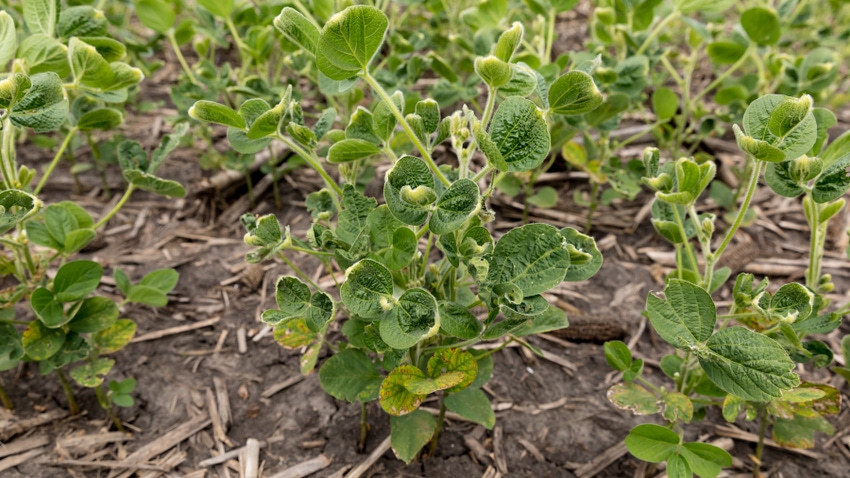
The cutoff date for applying dicamba over the top of soybeans has passed — but that doesn’t mean that dicamba isn’t being applied in other cropping systems near sensitive fields. Sarah Lancaster, Kansas State University weed science specialist, has been fielding questions from concerned soybean growers about off-target movement of dicamba onto their sensitive soybeans.
In the July 6 Agronomy eUpdate, Lancaster reminds growers that dicamba is used in range and pasture, fallow, and corn cropping systems, as well as in Xtend soybeans. And with the flush of weeds in wheat fields after recent rains, she reminded growers that dicamba is one of a list of tools farmers are considering in controlling weeds in their wheat stubble after harvest.
“Also, there are other types of herbicides that can cause leaf malformations. Be sure to consider the other herbicides applied in or near your soybeans,” she writes.
There are two types of drift: particle drift and vapor drift. Particle drift occurs when herbicide droplets blow from the application site and land on sensitive plants. Crop response is more severe the closer to the application site.
Vapor drift occurs when the herbicide is aerosolized into very fine particles that can move over greater distances from the original application point. The crop may have less of a response to vapor drift.
Lancaster explained that if a single dicamba drift event occurred during the vegetative growth stages of soybeans, the field is at less risk for a yield loss. However, that risk rises if the event occurs near flowering. And yield reductions are greater if multiple drift events occur, and if they happen during reproductive growth stages.
You can learn more at bit.ly/eupdatedicambadrift.
Review herbicide injury symptoms in K-State Agronomy handout C715, “Herbicide Mode of Action,” at bit.ly/herbmodeaction.
Kansas State Agronomy eUpdate contributed to this article.
About the Author(s)
You May Also Like






